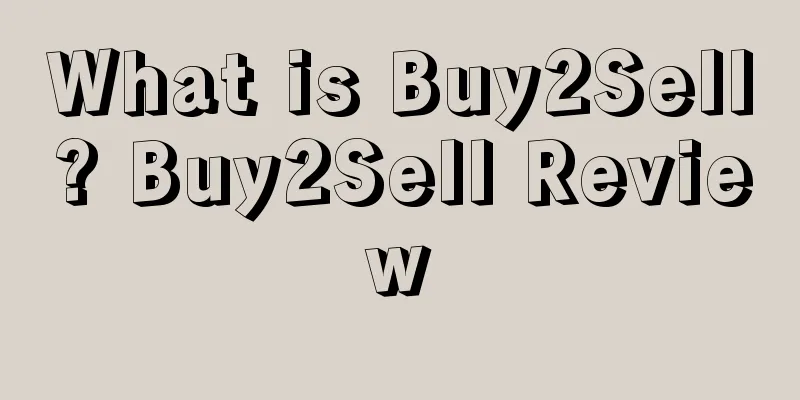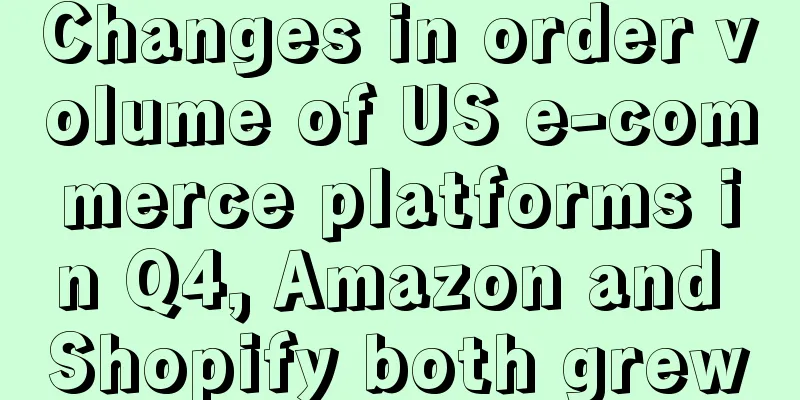|
Blue Planet is an e-commerce brand that sells eco-friendly eyewear and has a dominant position in the market both online and offline. The brand has an annual revenue of more than 4 million and a return on investment of 32% .
(Click here to view the brand website: https://blueplaneteyewear.com/ )
Blue Planet's brand philosophy is to create a new eco-friendly and sustainable eyewear series , which is made from recycled glass lenses, plastics, metals, etc. from other series.
The brand also turns the excess materials of the Blue Gem series into new sunglasses. After Blue Gem produces its product series, it uses the remaining materials to make Blue Planet series sunglasses and reading glasses to cater to customers' green and environmentally friendly consumption concepts. Blue Planet is benefiting mankind both from an environmental and economic perspective. So what is the secret of Blue Planet's success with an annual revenue of 4 million?
This article interviews Blue Planet's brand manager and vice president Matt Lawenda to reveal the secret of how the brand creates environmentally friendly sunglasses while generating huge revenue. Let's take a look!
Q: How did you decide to become an e-commerce entrepreneur? When did you start? A: I used to be a person who knew everything but was not good at anything, and I liked to travel around the world. In 2011, I was working as a volunteer in an orphanage in another city, and suddenly one day I received a call saying that my father was diagnosed with cancer. So I decided to go home. During the seven months I stayed at home with my father, he taught me a lot. He introduced me to the job at Blue Planet, and I started as a grassroots salesperson and became a product designer. Then, my wife Lisa (Blue Planet CEO) and I worked hand in hand to build it into the brand it is today.
Q: What is the biggest challenge you faced in creating and developing your e-commerce business? A: At the beginning, the biggest challenge I encountered was to create a brand website. Since I did not have a college degree and had no experience in website design, I tried to build several websites myself, but all failed. In the end, I created an independent website for the brand through Shopify. Shopify is convenient and easy to use, and we can also edit the website we want by ourselves.
At the beginning, I read Shopify-related articles on my phone almost every day, looking for suitable website plugins and suggestions. Now I have mastered the method of creating a Shopify store, and I can have fun while running the website. I started to update the product pictures and maintain the website layout myself.
I slowly taught myself how to run the site, including uploading products and changing the design. Looking back, from the first launch to now, the results are truly amazing. Once customers find the product they want, they usually want to buy it in the most convenient way. By understanding this and improving payment methods, our conversion rate has increased and doubled every year.
Now my new challenge is how to effectively use email marketing to bring consumers back to our website.
Q: If you were given another chance, would you choose to do the same thing? A: The answer is yes. The choices I made have made me who I am today. I wouldn’t change a single decision. It’s been a long road and I still have a lot to learn, but the knowledge I’ve gained and the friendships I’ve developed through this experience are unforgettable. It’s been a great experience, and we’ve enjoyed watching our brand change, grow, and evolve.
Q: Can you introduce your current elite team? A: We now have a team of 15 people, including warehouse management, sales managers (managing more than 100 outside sales representatives), purchasing managers, order managers, retail/wholesale customer service managers and a supervisor. These members have been with us for many years and have watched the brand grow step by step. In addition to this, we hired two freelance photographers and outsourced our product photography to them. One photographer was responsible for our daily photography and model photography, and the other photographer processed the product photos for us.
Q: Did you take the product photos yourself? A: No, we hired a professional photographer to help us take product photos. We believe that product images are the key to sales, and they must be perfect. So we would rather spend money on taking high-quality product images so that once consumers see the product images, they will think that this is what they want to buy and what they want to see.
Q: What are the steps in your product development? Step 1: Get design inspiration My wife and I visit our factories to look for new graphics and colors, and come back to brainstorm, with the goal of finding unique designs that will fit our target audience/customer base. We attend many exhibitions to get some inspiration from international fashion. In addition, we keep in touch with suppliers to understand their sales and find ways to realize our product designs.
Step 2: Develop product ideas and select product lines Developing products requires constant experimentation. We added bamboo and wood to the design, so our glasses look cooler, which is basically the signature look of our glasses. After the product concept is created, the first thing is to make a drawing, then make a physical sample, and then our team votes and tests it. If the sample meets the standards, then the design will be added to the production series for the next year and put into production.
Our six main suppliers are located in Thailand and China, so we visit factories in China and Thailand every year.
Q: How do you find and select suppliers? A: We are lucky that almost all of the suppliers we have worked with have been with us for more than 20 years. However, finding new suppliers is definitely a challenge. We like to start with small factories and only work with new factories for one or two styles. After we understand their shipping methods and conditions, we make the next decision. In short, my advice is to work with new suppliers at the beginning, don't invest all your capital in the same supplier, and leave yourself a way out. Observe first, then make a decision.
Q: How often does your brand launch new product lines? A: We launch about one to two new styles a year. In fact, we develop and launch new product lines every year, keeping the best-selling products each year or removing the underperforming products. We try to launch as many new styles as possible, so that our customers will come back for new product lines and designs, and our suppliers will stock up .
Q: What is your brand’s best-selling product? A: Our reading glasses sell better than our sunglasses. People find a pair they like and stick with them. They often buy several pairs in different colors or styles, or when they need to change lenses because the prescription gets stronger, which creates a lot of repeat business. People who buy sunglasses tend to buy one style at a time. We use special bundles to get people to buy multiple pairs. We have about 94 models of sunglasses and reading glasses in total, each with a different design and color.
Q: Does your brand have offline stores? A: Yes. We started to expand offline about three years ago and surprisingly, we have achieved great success. Wholesale products bring us a lot of revenue. You can find our products in retailers such as Lulu Boutiques and Soft Surroundings.
Q: What are some good ways for your brand to attract new customers? A: I think word of mouth is the best way to attract new customers. Cooperate with other brands with similar audiences and conduct joint promotions. This is how we attract a large number of new consumers.
Q: What methods do you use to increase traffic most effectively? A: Our two biggest traffic sources are Google Ads and email marketing.
The traffic generated by Google Ads alone is quite good. For a newbie who doesn’t know anything, Google Ads’ Traffic Booster is very transparent. It allows me to track ad performance and traffic, freeing up my time to do other important things. Email marketing is also an important marketing channel. We can tell brand stories to the audience through emails and attract consumers' interest, so they will come back regularly to see new products. In addition to these two channels, we also ran PPC ads on Facebook and Instagram to promote the new series of products and designs.
Q: What email marketing strategy are you using? A: We have seen great results using a promotional email collection tool, and it turns out that our potential customers are willing to enter their email address to win a chance to spin a wheel of prizes, including coupons and free sunglasses.
We found that sending lead emails caused many potential customers to lose. So now our goal is to send meaningful emails to customers instead of a bunch of junk automated emails.
That being said, our after-sales support is done via automated emails. We invite customers to leave a review and include a coupon code that expires in 30 days. This helps generate repeat purchases and improve conversion rates.
There is relevant information about our brand at the bottom of each marketing email, and users can click on the link to view our brand story, categories, and giveaway plans, etc. This type of email is more detailed and more effective than a lead-in email.
We mostly use Shopify's built-in system to send emails to customers to save abandoned carts. For collecting reviews and data, we use Conversio, a small plugin that you can put on your website.
Q: Can you tell us more about your giving back program? A: I feel very honored and grateful to be able to give back in any way we can. We have two main giving programs.
We donate a pair of glasses that are being sold to someone in need. To date, we have donated approximately 850,000 pairs of glasses.
In addition to this, we work with Direct Relief, a non-profit charity that provides international aid in the event of natural disasters. They provide a lot of supplies, including emergency relief kits with our glasses, food, etc. During the tornado, we donated 25,000 glasses to them, which they then distributed to the victims.
2) Random Acts of Kindness Program In addition, our team spontaneously organized to serve as volunteers in the local community. Ever since our warehouse was nearly destroyed by fire in 2018, I’ve felt the importance of community. We have taken the initiative as part of our company and have been actively carrying out a number of activities. Here are some examples of the 15 community volunteer services we have participated in:
Q: Are there any books, videos or resources you would recommend to new sellers? A: I have a lot of audiobooks on Amazon’s Audible platform. I can recommend the following to other e-commerce sellers: Growth Hacker Marketing by Ryan Holiday One Page Marketing Plan by Alan Dib The Conversion Code by Chris Smith The Richest Man in Babylon by George S. Clason
Q: If you had to give one piece of advice to new sellers, what would it be? A: Take your time and stick with it. There are many challenges along the way, but you have to move forward and overcome them. Keep learning and keep growing.
I wonder if all sellers have been inspired by Blue Planet’s brand growth story? At least we understand that in order to build a strong brand, you have to design quality products, give back to the community and focus on your customers in order to gain a reputation in a niche market.
Will the e-commerce dark horse Shopify be the next Amazon?
Starting from scratch, Shopify's 30-day store tutorial - Day 30
Starting from scratch, Shopify sellers’ entrepreneurial stories series ①: The road to product selection and earning $1,000 first
Statement: When reprinting this article, the title and original text must not be modified, and the source and original link must be retained. |










